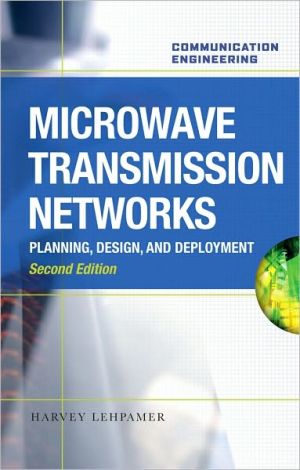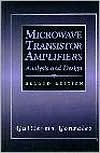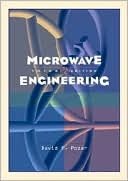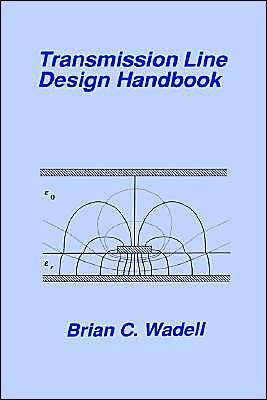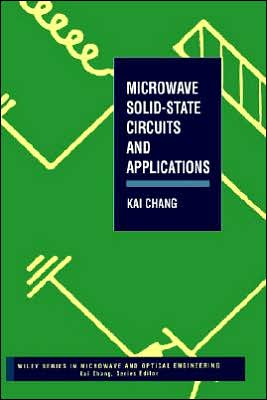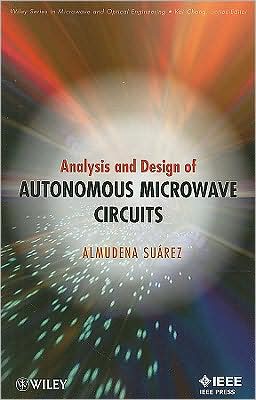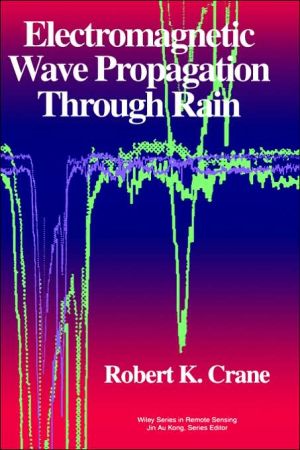High Power Microwaves
Search in google:
The first edition of High Power Microwaves was considered to be the defining book for this field. Not merely updated but completely revised and rewritten, the second edition continues this tradition. Written from a systems perspective, the book provides a unified, coherent presentation of the fundamentals in this rapidly changing field. The presentation is broad and introductory, with the flavor of a survey, yet not elementary. The authors cover all the major types of microwave sources, their distinguishing features, and primary research issues, and the fundamental limits on performance. What’s new in the second edition: • Coverage of HPM systems with a detailed example called SuperSystem • A survey of a class of high power radiators, with very different technologies and applications, that has fully emerged since the first edition • New HPM formulary contains a handy compilation of frequently used rules of thumb and formulas The book outlines historical trends that have led to the development of HPM and compares the capabilities of HPM to those of conventional microwaves. It divides the field into two sectors: applications driven and technology driven, and address both perspectives. Starting from the applications of HPM, the book reviews microwave fundamentals, enabling technologies, and the equipment and facilities surrounding the sources in which microwaves are generated. The authors conclude with coverage of ultrawideband technologies and the major source groups.
Introduction 1Origins of High Power Microwaves 2High Power Microwave Operating Regimes 3Future Directions in High Power Microwaves 9Further Reading 12References 12Designing High Power Microwave Systems 13The Systems Approach to High Power Microwaves 13Looking at Systems 16Linking Components into a System 17Prime Power 19Pulsed Power 22Microwave Sources 23Mode Converter and Antenna 24Systems Issues 25Scoping an Advanced System 27NAGIRA: Prototype for the SuperSystem 28Constructing a SuperSystem 31Antenna and Mode Converter 31Backward Wave Oscillator 32Pulsed Power Subsystem 34Conclusion 41Problems 42References 42High Power Microwave Applications 43Introduction 43High Power Microwave Weapons 43General Aspects of High Power Microwave Weapons 46E-Bombs 53First-Generation High Power Microwave Weapons 54Active Denial 55Neutralizing Improvised Explosive Devices 56Jamming or Predetonating Proximity-Fused Munitions 57Vigilant Eagle 58Missions 59Electromagnetic Terrorism 60Coupling 62Hardening 64High Power Microwave Effects on Electronics 65Conclusion 69High Power Radar 69Power Beaming 71Space Propulsion 78Launch to Orbit 78Launch from Orbit into Interplanetary and Interstellar Space 85Deployment of Large Space Structures 90Plasma Heating 91Sources for Electron Cyclotron Resonance Heating 96Particle Accelerators 97Problems 103References 105Microwave Fundamentals 109Introduction 109Basic Concepts in Electromagnetics 110Waveguides 112Rectangular Waveguide Modes 115Circular Waveguide Modes 121Power Handling in Waveguides and Cavities 124Periodic Slow-Wave Structures 133Axially Varying Slow-Wave Structures 134Azimuthally Varying Slow-Wave Structures 139Cavities 144Intense Relativistic Electron Beams 148Space-Charge-Limited Flow in Diodes 149Beam Pinching in High-Current Diodes 153Space-Charge-Limited Electron Beam Flow in a Drift Tube 153Beam Rotational Equilibria for Finite Axial Magnetic Fields 156Magnetically Insulated Electron Layers 157Microwave-Generating Interactions 159Review of Fundamental Interactions 160O-Type Source Interactions 161M-Type Source Interactions 167Space-Charge Devices 168Amplifiers and Oscillators, High- and Low-Current Operating Regimes 171Phase and Frequency Control 173Summary 174Problems 175References 177Enabling Technologies 179Introduction 179Pulsed Power 180Magnetic Stores 185Flux Compressors 186Electron Beams and Layers 191Cathode Materials 191Electron Beam Diodes 195Microwave Pulse Compression 197Antennas and Propagation 202Mode Converters 203Antenna Basics 204Narrowband Antennas 208Wideband Antennas 212Diagnostics 214Power 215Frequency 216Bandpass Filters 216Dispersive Lines 216Heterodyne Detection 218Time-Frequency Analysis 219Phase 220Energy 220High Power Microwave Facilities 222Indoor Facilities 222Outdoor Facilities 224Microwave Safety 226X-Ray Safety 229Problems 230Further Reading 231References 231Ultrawideband Systems 235Ultrawideband Defined 235Ultrawideband Switching Technologies 239Spark Gap Switches 239Solid-State Switches 242Ultrawideband Antenna Technologies 246Ultrawideband Systems 249Mesoband Systems 250Subhyperband Systems 251Hyperband Systems 253Conclusion 255Problems 255References 256Relativistic Magnetrons and MILOS 259Introduction 259History 260Design Principles 262Cold Frequency Characteristics of Magnetrons and CFAs 267Operating Voltage and Magnetic Field 272Characteristics of Magnetrons 274Summary of Magnetron Design Principles 279Operational Features 280Fixed-Frequency Magnetrons 281Tunable Magnetrons 285Repetitive High-Average-Power Magnetrons 286Magnetron-Based Testing Systems: MTD-1 and Orion 290Research and Development Issues 291Pulse Shortening 293Peak Power: Phase-Locking Multiple Sources and Transparent-Cathode Magnetrons 296Efficiency: Limiting Axial Current Loss and Radial vs. Axial Extraction 300Fundamental Limitations 302Power Limits 302Efficiency Limits 305Frequency Limits 308MILOs 309Crossed-Field Amplifiers 314Summary 314Problems 315References 318BWOs, MWCGs, and O-Type Cerenkov Devices 321Introduction 321History 322Design Principles 324The Slow-Wave Structure: Dimensions and Frequencies 328Addition of the Beam: Resonant Interactions for Different Device Types 330Start Current and Gain 336Peak Output Power: The Role of Computer Simulation 340Operational Features 345MWCGs, MWDGs, and RDGs 345BWOs 349TWTs 353Research and Development Issues 357Pulse Shortening 357BWO Operation at Lower Magnetic Fields 359Axially Varying Slow-Wave Structures to Enhance Efficiency 360Other O-Type Sources; DCMs, PCMs, and Plasma-Filled BWOs 361Fundamental Limitations 361Summary 364Problems 365References 370Klystrons and Reltrons 375Introduction 375History 377Design Principles 379Voltage, Current, and Magnetic Field 379Drift Tube Radius 381Klystron Cavities 381Electron Velocity Modulation, Beam Bunching, and Cavity Spacing 384Beam Bunching in Low-Impedance Relativistic Klystrons 388Circuit Modeling of Klystrons 391Reltron Design Features 394Operational Features 395High-Impedance, Near-Relativistic Klystrons 395High-Impedance, Relativistic Klystrons 399Low-Impedance Klystrons 405Reltrons 412Research and Development Issues 414High Power Multibeam and Sheet-Beam Klystrons 415Low-Impedance Annular-Beam Klystrons 417Fundamental Limitations 422Pencil-Beam Klystrons 422Annular-Beam Klystrons 424Reltrons 425Summary 426Problems 426References 430Vircators, Gyrotrons and Electron Cyclotron Masers, and Free-Electron Lasers 435Introduction 435Vircators 436Vircator History 437Vircator Design Principles 438Basic Vircator Operational Features 444Advanced Vircators 447Double-Anode Vircators 448Cavity Vircators 451Virtodes and Feedback Vircators 453Coaxial Vircators 454Phase Locking of Vircators 456Fundamental Limitations and Outlook for Vircators 458Gyrotrons and Electron Cyclotron Masers 458History of Gyrotrons and Electron Cyclotron Masers 459Gyrotron Design Principles 460Gyrotron Operational Features 469High-Average-Power Gyrotrons 469Relativistic Gyrotrons 470CARMs and Gyroklystrons 473CARMs 473Gyroklystrons 475Outlook for Electron Cyclotron Masers 478Free-Electron Lasers 480History 480Free-Electron Laser Design Principles 481Operational Features of Free-Electron Lasers 489Outlook for Free-Electron Lasers 495Summary 496Problems 497References 500High Power Microwave Formulary 509Electromagnetism 509Waveguides and Cavities 511Pulsed Power and Beams 514Diodes and Beams 515Microwave Sources 517Propagation and Antennas 519Applications 522Power Beaming 522Plasma Heating 523Index 525

